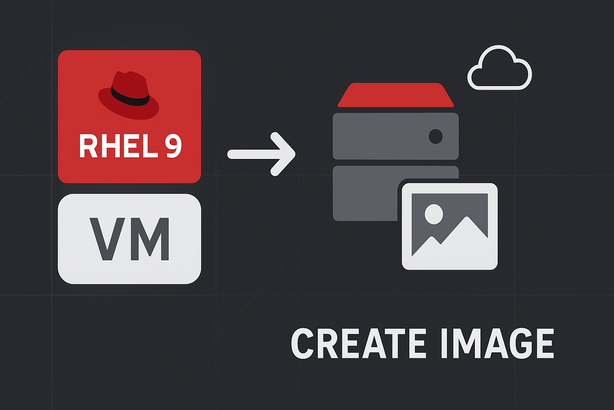
Following the LXD theme of my previous posts, today I’m going to walk you through creating a RHEL 9 VM on LXD, and then show you how to turn that VM into an image. This way, you can spin up new RHEL 9 VMs whenever you want—without having to sit through the whole install/setup process again.
To follow along, you’ll need an active Red Hat subscription. If you’re doing this for personal use (like self-development, home lab tinkering, or just because you enjoy virtual machines as much as Netflix), you can download RHEL for free when you sign up for the Red Hat Developer Subscription for Individuals.
No-cost Red Hat Enterprise Linux Individual Developer Subscription: FAQs
1. What is the Red Hat Developer program’s Red Hat Developer Subscription for Individuals?
The Red Hat Developer Subscription for Individuals is a no-cost offering of the Red Hat Developer program and includes access to Red Hat Enterprise Linux among other Red Hat products. It is a program and an offering designed for individual developers, available through the Red Hat Developer program.
2. What Red Hat Enterprise Linux developer subscription is made available at no cost?
The no-cost Red Hat Developer Subscription for Individuals is available and includes Red Hat Enterprise Linux along with numerous other Red Hat technologies. Users can access this no-cost subscription by joining the Red Hat Developer program at developers.redhat.com/register. Joining the program is free.
Creating the VM
I’ll be using RHEL 9 here, but the same steps apply to other versions.
a. Create an empty VM:
lxc init rhel9 --vm --empty
b. Give the VM a 20GB root disk:
lxc config device override rhel9 root size=20GiB
Optional: increase CPU and RAM limits if needed (depending on your profile).
c. Add the install disk:
lxc config device add rhel9 install disk source=/home/victor/Downloads/OS/rhel-9.6-x86_64-dvd.iso boot.priority=10
d. Start the VM and go through the RHEL install (not covered here):
lxc start rhel9
e. Remove the install disk when the install is complete:
lxc device remove rhel9 install
Install the LXD agent
It’s a good idea to include the LXD agent in your image—otherwise, you’ll miss out on nice integration features.
a. Mount the config device:
mkdir /mnt/iso
mount -t virtiofs config /mnt/iso
cd /mnt/iso
b. Install and reboot:

c. Check that the agent is running:
$ lxc exec rhel9 -- systemctl is-active lxd-agent
active
Prepare the OS
Run Updates
This section is optional and you only need to follow in case you want to get your image updated with the current packages.
a. Connect the VM to your Red Hat account:
I’m using Red Hat Enterprise Linux Individual Developer Subscription
# rhc connect
Connecting rhel9 to Red Hat.
This might take a few seconds.
Username: jdoe
Password: *********
● Connected to Red Hat Subscription Management
● Connected to Red Hat Insights
● Activated the Remote Host Configuration daemon
Successfully connected to Red Hat!
Manage your connected systems: https://red.ht/connector
b. Install updates and reboot:
# yum update -y
# dnf needs-restarting -r || reboot
c. Install any packages or make tweaks you’d like baked into the image.
Clean up the OS
Before creating the image, let’s tidy things up.
a. Disconnect the VM from Red Hat’s network:
# rhc disconnect
Disconnecting rhel9 from Red Hat.
This might take a few seconds.
● Deactivated the Remote Host Configuration daemon
● Disconnected from Red Hat Insights
● Disconnected from Red Hat Subscription Management
Manage your connected systems: https://red.ht/connector
b. Connect to the terminal as root (either via the Terminal tab on LXD’s UI, or with lxc exec rhel9 -- /bin/bash).
c. Clean DNF cache:
dnf clean all
d. Clean subscription-manager data:
subscription-manager clean
e. Remove SSH keys:
rm -f /etc/ssh/ssh_host_*
f. Clean up logs:
journalctl --vacuum-time=1d
rm -rf /var/log/* /tmp/*
g. Change hostname to a default one:
hostnamectl set-hostname localhost.localdomain
h. Delete the machine ID:
rm -f /etc/machine-id
rm -f /var/lib/dbus/machine-id
touch /etc/machine-id
i. Delete the user if you created one (optional):
userdel -rf redhat
j. Delete root’s history (optional):
rm -f /root/.bash_history
k. Shutdown the machine:
poweroff
Edit the VM Metadata
Before publishing, edit metadata so your image looks nice and tidy:
lxc config metadata edit rhel9
Example:
architecture: x86_64
creation_date: 1758825660
expiry_date: 0
properties:
architecture: x86_64
description: Red Hat Enterprise Linux 9.6 (Plow)
os: rhel
release: Plow
version: "9.6"
templates: {}
Tip: to get the current date in Unix time, use date +%s
Create the Image
We are now ready to create the image with lxc publish:
$ lxc publish rhel9 --alias rhel96.x86_64
Instance published with fingerprint: e4ff15c38889676cb3fe1ae0268122294856414b40275ef61cfe0baf23330ae3
Launch a New VM from the Image
And finally, create a fresh VM without all the hassle:
$ lxc launch rhel96.x86_64 rhel9-test
Launching rhel9-test
That’s it—you’ve got a reusable RHEL 9 image. Future VM creation is now basically a one-liner. Way better than babysitting an ISO every time.